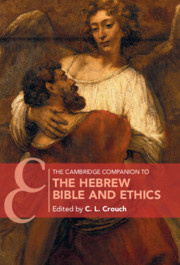Book contents
- The Cambridge Companion to the Hebrew Bible and Ethics
- Cambridge Companions to Religion
- The Cambridge Companion to the Hebrew Bible and Ethics
- Copyright page
- Dedication
- Contents
- Notes on Contributors
- Introduction
- Part I Legal Ethics
- Part II Narrative Ethics
- Part III Prophetic Ethics
- Part IV Wisdom/Poetic Ethics
- 16 Teaching Complex Ethical Thinking with Proverbs
- 17 Divine Justice in the Book of Job
- 18 Justice and Retribution in the Psalms
- Part V Faithful Ethics
- Index
- Cambridge Companions to Religion (continued from page iii)
- References
18 - Justice and Retribution in the Psalms
from Part IV - Wisdom/Poetic Ethics
Published online by Cambridge University Press: 05 February 2021
- The Cambridge Companion to the Hebrew Bible and Ethics
- Cambridge Companions to Religion
- The Cambridge Companion to the Hebrew Bible and Ethics
- Copyright page
- Dedication
- Contents
- Notes on Contributors
- Introduction
- Part I Legal Ethics
- Part II Narrative Ethics
- Part III Prophetic Ethics
- Part IV Wisdom/Poetic Ethics
- 16 Teaching Complex Ethical Thinking with Proverbs
- 17 Divine Justice in the Book of Job
- 18 Justice and Retribution in the Psalms
- Part V Faithful Ethics
- Index
- Cambridge Companions to Religion (continued from page iii)
- References
Summary
Moral discussions of the so-called psalms of imprecation tend to focus on the author as the mind behind their most violent imagery, with the retributions they invoke assumed to be a product of imaginative fantasy. Debates pivot on whether this fantasy is born from justified or unjustified anger. The following discussion breaks from these assumptions altogether, arguing not only that moral reasoning underlies the so-called psalms of imprecation, but that this reasoning is deeply informed by specific patterns of act and consequence attested across ancient Near Eastern legal cultures. These patterns include talion, shame, and seat of the act. The psalter’s presentation of acts and their consequences draws on the features and logic of these patterns as they seek to compel YHWH to fulfil the retributive norms that the authors observe and therefore expect as a response to particular kinds of crime.
- Type
- Chapter
- Information
- The Cambridge Companion to the Hebrew Bible and Ethics , pp. 274 - 288Publisher: Cambridge University PressPrint publication year: 2021



